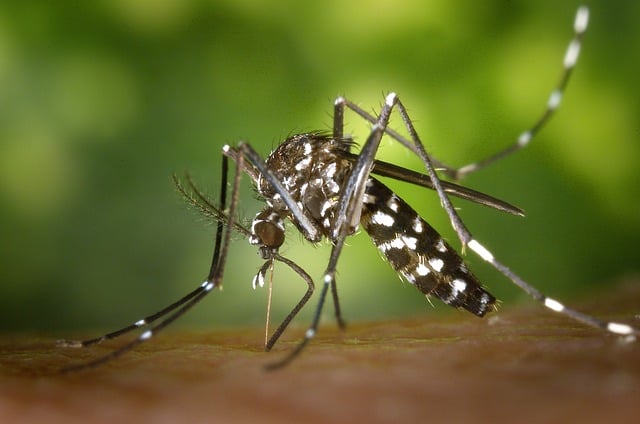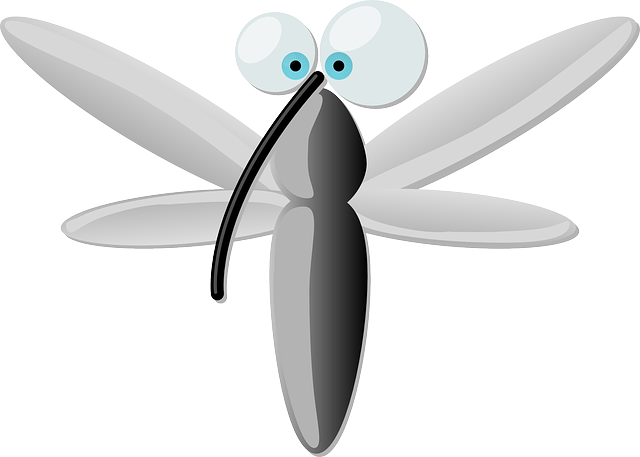Mosquito control is a global priority due to diseases like malaria, dengue fever, Zika, and West Nile. Strategies include eliminating breeding sites, using insecticides, screens, protective clothing, and DEET repellents. Understanding mosquito behavior and adopting these measures significantly reduces disease risk. Options range from chemical (DEET) to natural (citronella, lemon eucalyptus oil, neem oil) repellents, with community involvement, public education, and strategic methods like nets, traps, and insecticides crucial for large-scale control.
Mosquitoes pose a significant health risk worldwide, transmitting diseases like malaria, dengue, and Zika. This article explores comprehensive mosquito control strategies. We delve into understanding mosquito-borne illnesses, creating an inhospitable environment for mosquitoes at home and in yards, effective repellents (chemical and natural), protective clothing, nets, and equipment. Additionally, we discuss community efforts to control mosquito populations on a larger scale, emphasizing the importance of collective action for effective mosquito prevention and protection.
Understanding Mosquito-Borne Diseases: The Risks and Prevention Measures

Mosquito-borne diseases pose a significant global health risk. These include well-known illnesses like malaria, dengue fever, Zika virus, and West Nile virus. Preventing mosquito bites is a crucial step in safeguarding public health. Mosquito control measures involve eliminating breeding sites, using insecticides, installing screens, wearing protective clothing, and utilizing repellents. By implementing these preventive strategies, individuals and communities can significantly reduce the risk of mosquito-transmitted diseases.
Understanding the risks associated with mosquito-borne illnesses is essential for adopting effective prevention measures. Mosquitoes thrive in stagnant water, so removing potential breeding grounds like old tires, buckets, or cloggings gutters is vital. Additionally, using insecticides and repellents can offer protection during outdoor activities. During peak mosquito activity times, wearing long sleeves and pants, along with applying insect repellent containing DEET, can significantly lower the chance of bites. Staying informed about local disease prevalence and taking proactive steps will contribute to a safer environment for everyone.
Creating an Uninviting Environment for Mosquitoes: Tips for Your Home and Yard

Effective Mosquito Repellents: Chemical and Natural Options

When it comes to mosquito control, there are a variety of effective repellent options available. Chemical repellents, like DEET, have long been considered a reliable choice for warding off mosquitoes. These products create a barrier on the skin that discourages the insects from landing and biting.
However, natural alternatives have gained popularity due to their perceived safety and environmental friendliness. Options such as citronella, lemon eucalyptus oil, and neem oil offer a more organic approach to mosquito prevention. These natural repellents can be found in various forms, including candles, lotions, and sprays, providing users with flexible ways to protect themselves from these pesky pests.
Clothing as a Barrier: Protective Attire for Outdoor Activities

Protective attire plays a significant role in mosquito control during outdoor activities. Long-sleeved shirts, pants, and closed-toe shoes create a physical barrier against mosquito bites. Light-colored clothing is particularly effective as mosquitoes are attracted to darker hues. Additionally, using permethrin-treated fabrics can provide enhanced protection by repelling and killing mosquitoes. This method is especially beneficial for individuals engaging in outdoor pursuits in areas with high mosquito activity or during peak biting times.
By combining appropriate clothing with other mosquito prevention measures, such as insect repellent and proper habitat elimination, folks can significantly reduce the risk of bites while enjoying their time outdoors.
Mosquito Nets and Other Protective Equipment: For Indoor and Outdoor Use

Mosquito nets and other protective equipment play a significant role in mosquito control both indoors and outdoors. For indoor spaces, mosquito nets are often used as a primary barrier against these pests. These fine mesh screens can be hung over beds or at entry points to keep mosquitoes at bay while allowing fresh air circulation.
Outdoor areas require different strategies. Insect repellents, when applied correctly, can be highly effective. Personal repellent devices that emit ultrasonic waves are also available, although their effectiveness is debated. For larger outdoor spaces, mosquito traps that use CO2 or heat as attractants can help reduce mosquito populations. Combining these methods ensures comprehensive protection against mosquitoes, enhancing comfort and safety in both living and working environments.
Community and Public Health Efforts: Controlling Mosquito Populations on a Larger Scale

Community and Public Health Efforts play a vital role in Mosquito Control on a larger scale. Local governments and health departments often collaborate to implement strategies aimed at reducing mosquito populations and minimizing the risk of disease transmission. These efforts include comprehensive programs such as source reduction, where standing water, a breeding ground for mosquitoes, is eliminated or treated, and vector control operations that employ insecticides or biological agents to target adult mosquitoes and their larvae.
Public education is another crucial component of these initiatives. By raising awareness about mosquito-borne diseases and the simple measures individuals can take to protect themselves, such as using insect repellents and installing screens, communities can actively participate in Mosquito Control. Furthermore, community involvement in reporting mosquito breeding sites and supporting local efforts enhances the effectiveness of these public health interventions.
